Venice is divided into six parts called sestieri – singular sestiere.
It has always been that way. From the earliest sources we have, there sestieri are there in Venice.
The origin of the word sestiere
The word sestiere is itself just like quartiere, only with six parts instead of four.
Our common word ‘quarter’ for a part of town comes from the military fortifications the Romans built wherever they went. Such a fortification was rectangular, split in four parts by a cross-roads. Since many European cities started as Roman fortifications, that organisation of cities in four quarters became commonplace.
This is the reason we still use the word ‘quarter’ for a part of a town, even if most cities now have more than four parts.
The city of Venice has no Roman past of any importance.
Instead it grew out of a group of distinct settlements, six of them, scattered over an area of marsh. They became the basis of the six sestieri.
A city divided in four parts had quartieri, while a city divided in six parts had sestieri.
Early Venice
Initially, Venice wasn’t even the most important settlement in the early Venetian state. Eraclea, Malamocco and Torcello were more important, either politically or economically.
In the earliest period of Venetian history Venice wasn’t even one single city. Rather, it was a loose group of different settlements.
The most important settlement was at Rialto, which was a marketplace for fishermen, farmers and salt extractors from the central lagoon. The name Rialto is from Latin rivus altus, the high brink, as that marsh island was a bit higher than the others, and hence a useful place for bartering produce.
Other known settlements were on the island of Olivolo, now San Pietro di Castello, and in Dorsoduro.
Rialto became the political centre of the Venetian state when the Franks sacked and burned the Doge’s palace at Malamocco in 809. The Doge fled into the lagoon, and settled in 811 in what later became the St Mark’s area.
With the presence of the Doge and the rest of the administration of the Venetian State, the group of settlements centred around Rialto grew, fused and the name changed from Rialto to Venetia.
A divided city
The city of Venice is split in two by the winding Grand Canal, with three three sestieri on each side. Until the early 1900s the only bridge across was at Rialto.
With government and administration on the northern side it became common usage to refer to the three sestieri on the northern side as de citra (on this side) and the three on the southern side as de ultra (on the other side).
Sestieri de citra (north)
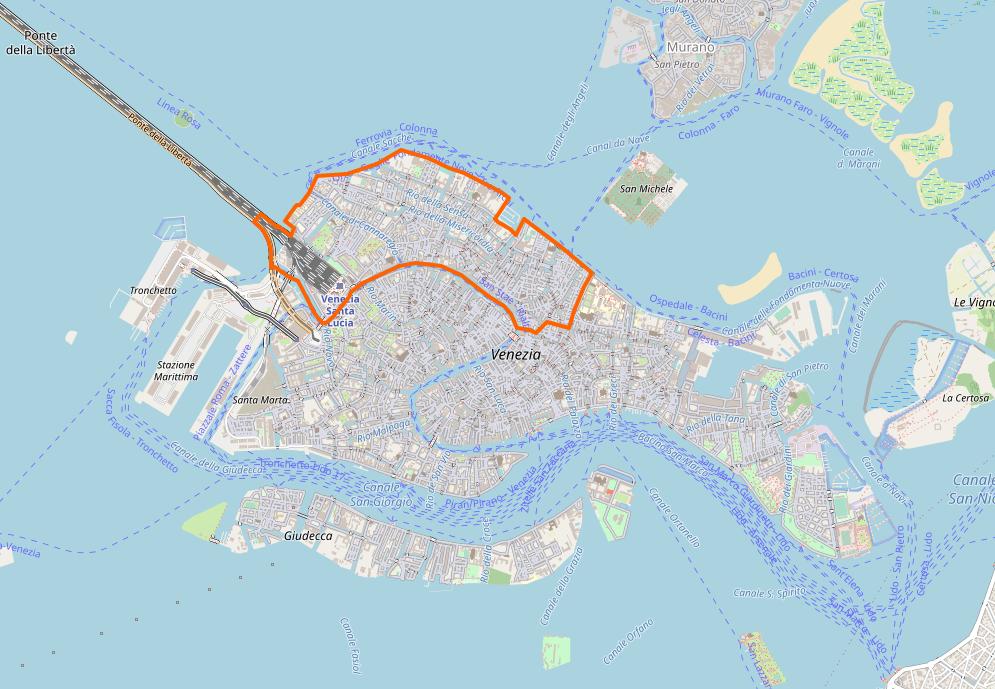
Cannaregio
The Sestiere Cannaregio is the second largest of the six, extending from the railroad station to the Rialto. It covers almost half of the northern part of Venice.
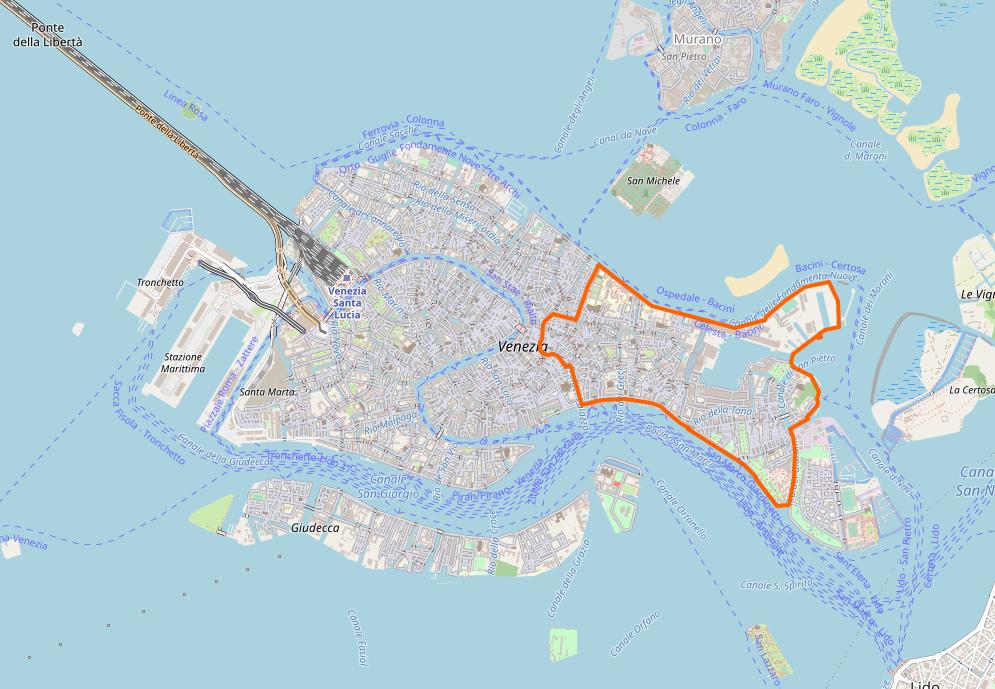
Castello
The Sestiere Castello is the largest of the sestieri, both in size and population. It occupies all of the north-east of the city, from San Pietro to the Doge’s Palace to the hospital.
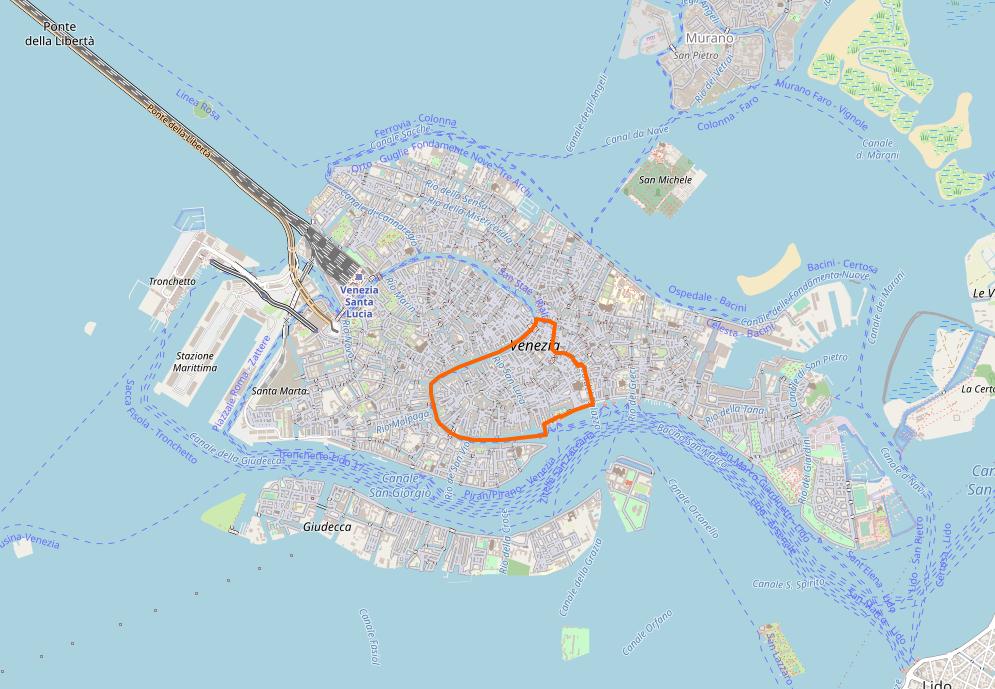
San Marco
The Sestiere San Marco is the central part of the city, bounded by the Grand Canal on three sides and a line from the Rialto to the Doge’s Palace on the last.
Sestieri de ultra (south)
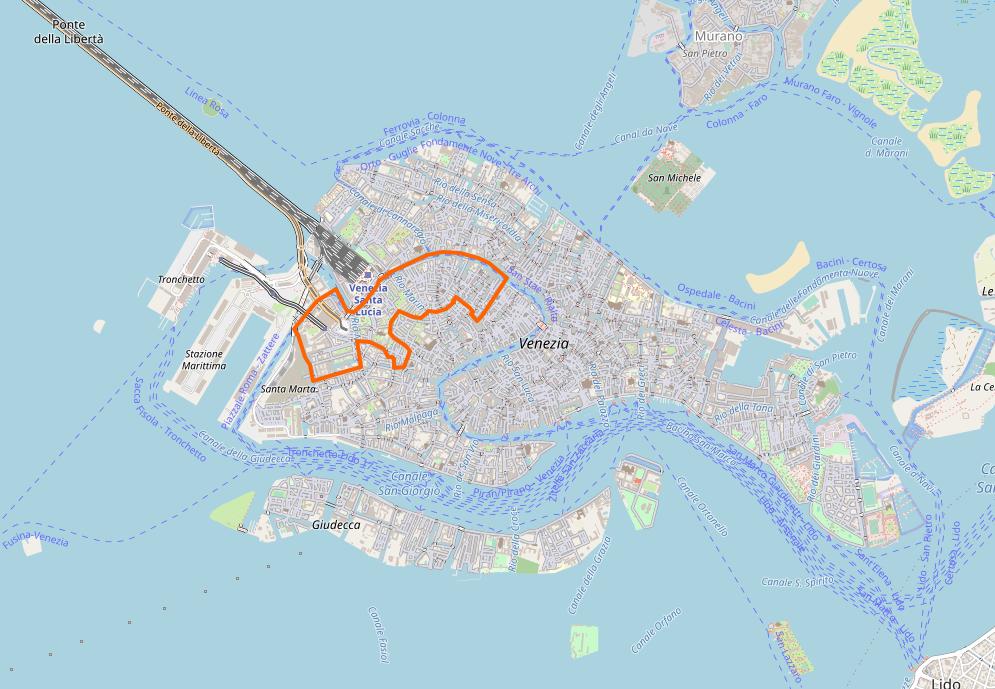
Santa Croce
The Sestiere Santa Croce is in the central western part of Venice, along the upper bend of the Grand Canal. It was important because the porto fluviale (the river harbour) was here.
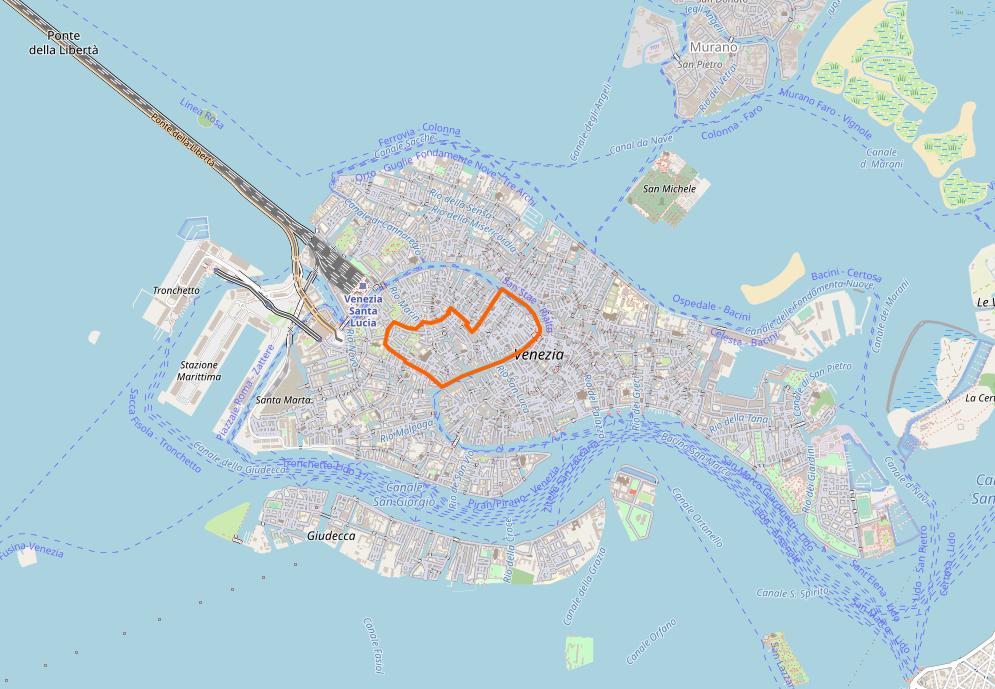
San Polo
The Sestiere San Polo is in central Venice, around the upper bend and central part of the Grand Canal. The Rialto market is in San Polo.

Dorsoduro
The Sestiere Dorsoduro is the southernmost part of Venice proper, on the north side of the Canale Giudecca.
The importance of the sestieri
During the time of the Venetian Republic the sestieri were real administrative units of the city.
Some political roles, such as the six councillors of the doge, which formed the Signoria, were distributed between the sestieri. Likewise, of the nine Procuratori di San Marco, three were dedicated to the sestieri de citra, and three de ultra.
Each sestiere also had a capo-sestiere who was responsible for law and order locally.
In the Austrian period, each sestiere had a Commissario Superiore di Polizia, as a kind of successor of tpoliticalhe Venetian capo-sestiere.
In modern Venice the sestieri don’t play a large role, if not for the fact that house numbers are separate for each sestiere.

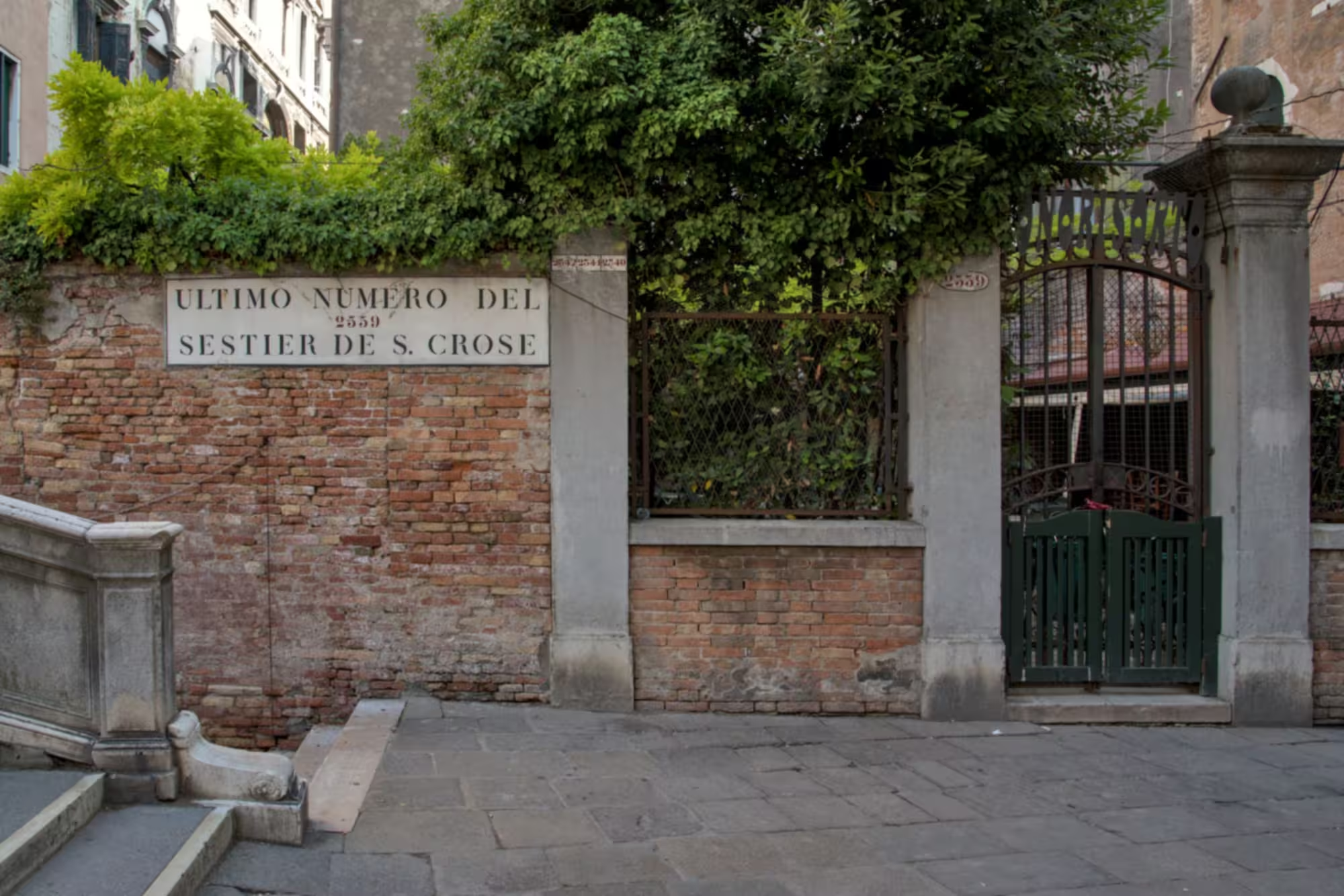
Leave a Reply